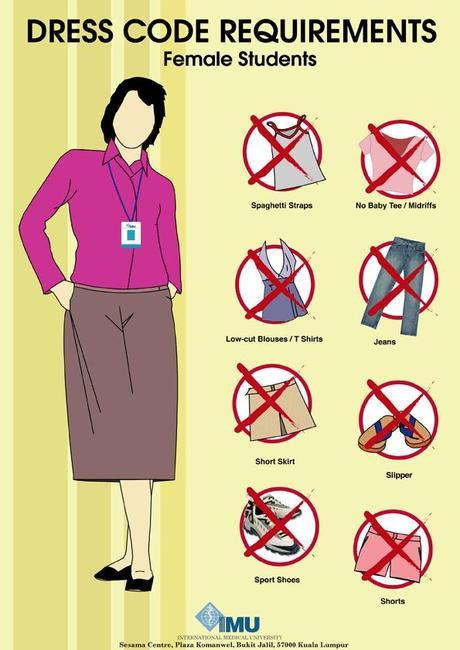At some point in their school careers, almost every girl I know has encountered some trouble with a dress code: her skirt was too short, her pants were too tight, or her straps were too thin. Though dress codes run the gamut from a few loose guidelines to a strict uniform, there are always instances of students breaking those codes. But here’s the problem with dress codes: almost every girl I know has been called out at least once for their attire, but I don’t know any boys who have. It’s the girls who see the prom dress of their dreams, but worry that they will not be able to wear it because of the length. It’s the girls who suffer through humidity and heat at the end of the school year, but aren’t allowed to cool off in a tank top. Though I think that most dress codes are well intentioned – meant to avoid clothing posing a “distraction” to the learning environment – those intentions are completely misguided and downright dangerous.
It may sound extreme, but I feel that the policing of attire in high school perpetuates rape culture. The rules of dress codes are primarily targeted at girls, and dress code supporters argue that clothing poses a distraction to students – a claim that is primarily targeted at boys. Girls are the distractors and boys are the distracted, which puts the onus of responsibility on the girls to keep from distracting the boys. To me, this sounds an awful lot like victim blaming when it comes to rape – women are just so attractive to men that men can’t resist them. It then becomes the woman’s job to do everything in her power not to be attractive or easily available to men – don’t walk alone at night, don’t drink too much when you go out, and definitely don’t wear provocative clothing. There’s too much focus on prevention and not enough on the cure. Instead of spending most of our efforts preventing rape, our efforts as a society should be teaching people not to rape. And high schools – even middle schools – are a great place to start that teaching.
After all, schools are primarily places of learning, and one of the most important lessons is social behavior. If boys are taught that girls are not objects for them to enjoy, that what a girl is wearing should have absolutely no impact on what a boy is learning, it would help teach them later that women are not objects for them to use or abuse sexually.
The best way to preserve the learning environment of a school is to use it to teach all kinds of things – not just math and history, but also the behaviors and attitudes that create constructive members of society who will make positive contributions to our culture. That’s what our schools should be focusing their energies on – not the tightness of a girl’s pants or the length of her skirt.


